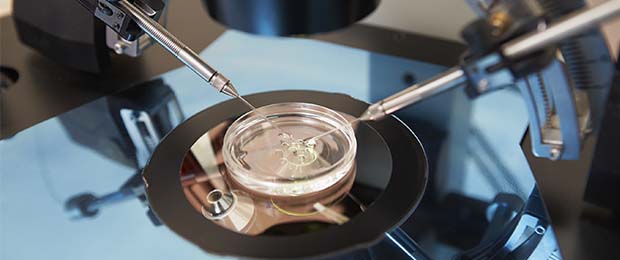In September 2016, Doctor Zhang announced that he had practised “three-parent IVF” in the United States for a Jordanian couple where the wife was the carrier of a mitochondrial disease (seeBirth of the first “three-parent baby”: a dangerous and irresponsible precedent). Their child “with three biological parents” was born last April. This announcement has fuelled criticism and warnings from scientists on medical and ethical grounds (see Birth following “three parent IVF”: reactions).
John Zhang’s team has just published details about the “experiment” in the journal entitled, Reproductive Biomedicine On-line.
Scientists at the New Hope Fertility Center in New York have removed the nucleus from the egg of a female donor to introduce the mother’s nucleus in its place. They then fertilised this modified egg with the father’s sperm before implanting it in the mother’s uterus. This new publication gives details on the methods used to transfer the mitochondria, freeze and thaw the embryo and generate an electrical impulse to introduce the mother’s nucleus into the donor egg. The study also shows that a certain number of the mother’s diseased mitochondria were transferred with the nucleus. This could have repercussions on the child’s health.
There are still questions about the child’s long-term health. The percentage of mitochondria affected could vary according to tissues and organs, and some cannot be checked (heart or brain). Scientists do not know what quantity of defective mitochondria could trigger symptoms in humans. Studies conducted in mice have shown that combinations of mitochondria can trigger neurological or metabolic disorders.
These uncertainties will remain because the child’s parents have refused long-term scientific monitoring. They are refusing any additional test unless the child requires further medical investigations. The study does not state whether they signed a long-term follow-up consent form or if they received additional information to assess the significance of such follow-up for their child “and for science per se”. The form appended to the study described the procedure in a very superficial manner, without providing any information about the potential risks associated with this method. John Zhang stated that the parents had received “cautious advice”.
Despite these “incomplete” results and criticisms from colleagues, John Zhang and his team will continue to carry out experiments essentially to test the technique on the eggs of older women in an attempt to “rejuvenate” them.
Nature, Sara Reardon (3/04/2017); Independent (John von Radowitz, Caroline Mortimer) (3/04/2017)

